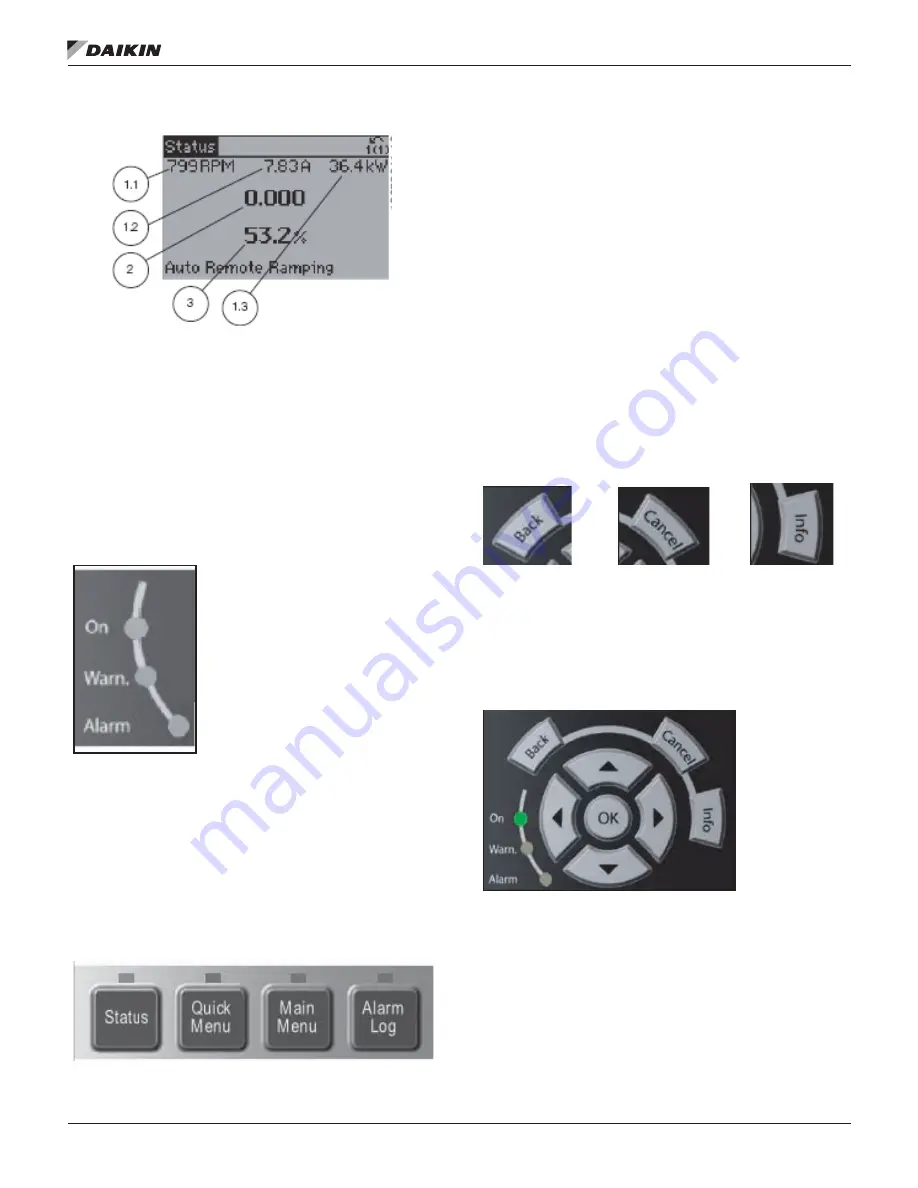
IOM 1207-6 • TRAILBLAZER
®
MODEL AGZ CHILLERS
116 www.DaikinApplied.com
Pump VFD Controller
Figure 87: Status Display II
In the example, Speed, Motor current, Motor power and
Frequency are selected as variables in the first and second
lines.
Display Contrast Adjustment
Press [status] and [▼] for darker display
Press [status] and [▲] for brighter display
Indicator Lights
Figure 88: LED Indicator Lights
If certain threshold values are
exceeded, the alarm and/or warning
LED lights up (See
). A status
and alarm text appear on the control
panel. The On LED is activated when
the frequency converter receives
power from mains voltage, a DC bus
terminal, or an external 24V supply. At
the same time, the back light is on.
•
Green LED/On: Control
section is working.
• Yellow LED/Warn: Indicates warning, may become Alarm.
• Flashing Red LED/Alarm: Indicates an alarm.
Control Keys
Menu Keys
The menu keys are divided into functions. The keys below
the display and indicator lights are used for parameter set-up
including choice of display indication during unit operation.
Figure 89: Menu Keys
Status
Three different readouts can be chosen by pressing the
[Status] key repeatedly. Normal display is shown in
Quick Menu
Used for programming only.
Main Menu
Used for programming all parameters.
Alarm Log
Displays an Alarm list of the ten latest alarms (numbered
A1-A10). To obtain additional details about an alarm, use the
arrow keys to maneuver to the alarm number and press [OK].
Information is displayed about the condition of the frequency
converter before it enters the alarm mode.
The Alarm log button on the LCP allows access to both Alarm
log and Maintenance log.
Back/Cancel/Info Keys
These keys are only used for programming.
Figure 90: Back/Cancel/Info Keys
Navigation Keys
The four navigation arrows (up, down, right, and left) are used
to navigate between the different screen choices. Use the keys
to move the cursor.
Figure 91: Navigation Keys
OK Key
Is used for choosing a parameter marked by the cursor and for
enabling the change of a parameter.






























